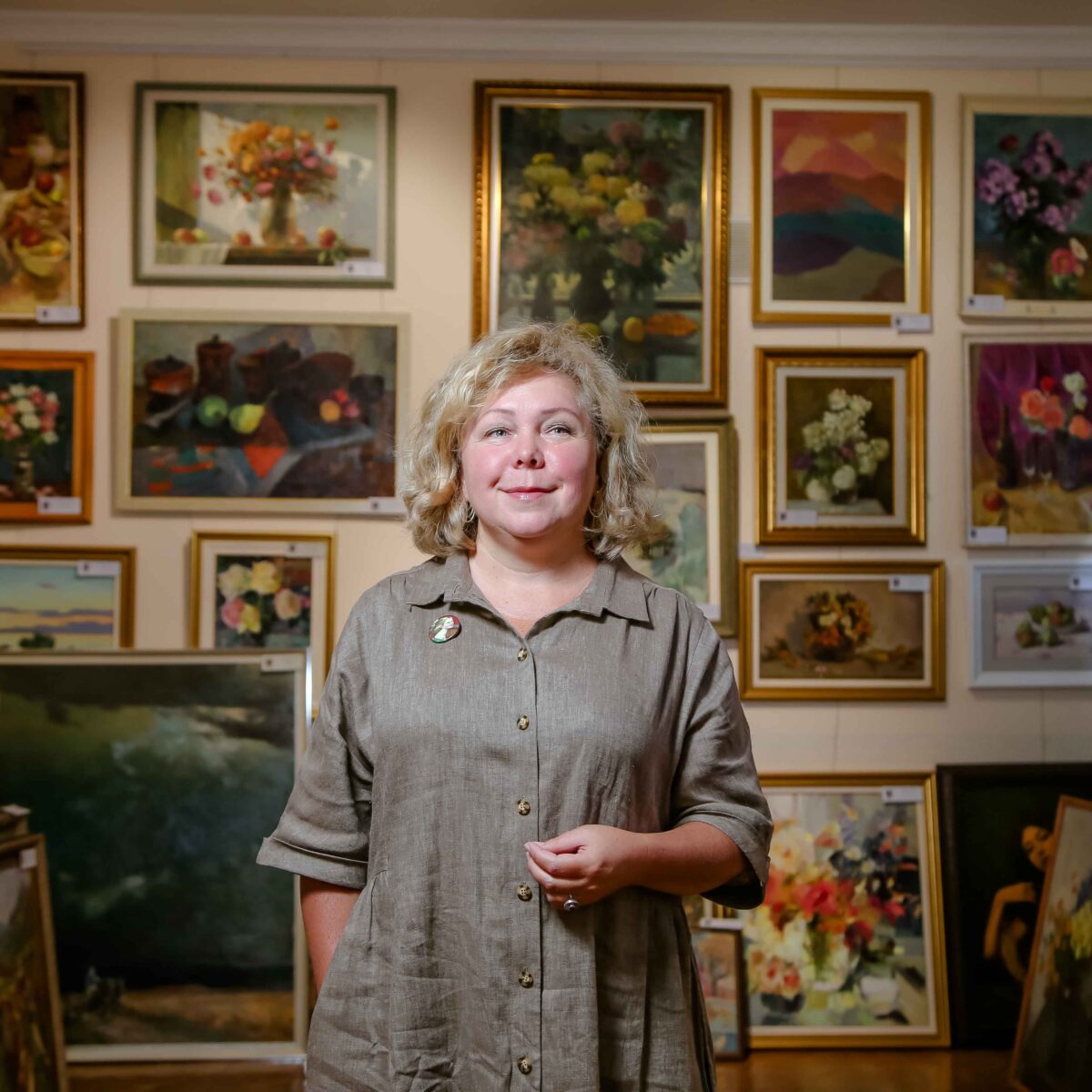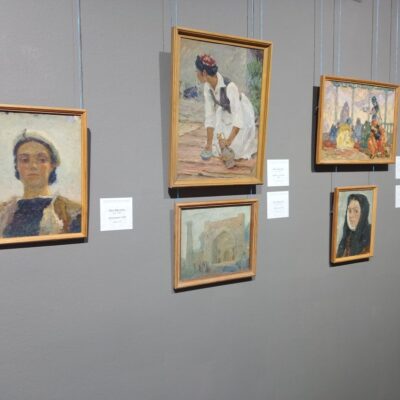Surely everyone can understand works of art, Olga Baturina, an art critic and teacher of the Zhurgenov Kazakh National Academy of Arts. She shared her knowledge in the history of art and her advice.
- How was art created?
Before going hunting, people first depicted an animal in full size. It was as if he was defeating him in advance. For the ancient man, art was like a ritual of victory: "I can portray a bison, but bison cannot." Human is an amazing creature. They didn't understand why it was raining, why there was a thunderstorm, why it was snowing, however they could humanise it, animate it. Animate from the Latin "anima" means soul. In the absence of science, humans were saved by imagination. Therefore, art is not some kind of dessert, not some kind of addition to humanity, but the essence of everything created by humanity. The main thing that remains after humanity is art. The main thing that leads humanity is art. There are art critics who separates the old art. Supposedly paintings are outdated, not relevant anymore. Why then do thousands of people come to museums? To Gioconda, to Rembrandt. They (some art critics) say: "This is the joy of recognising the old." No, they come to Rembrandt because he is different each time, because YOU are different each time of your visit.
– How to distinguish real art from salon and fake art?
For me, this is only one indicator: the presence of a super-task, a secret, hidden meaning that is not on the surface, but in depth. If there is a super task, then this is a real work of art. Painting and music have always been an elite project. Not for everyone, but for the customer: kings, aristocracy, who had an education. Because painting is a complex art, just like classical music. You can't suddenly begin to understand it without knowing anything, you need such a habit.
A viewer who was guided by an art, according to the principle of mimesis: if it looks like a nature, then it is an art, if it does not look like it, then it is not an art. After Matisse and Picasso, this indicator disappears. Now the viewers are confused: How to distinguish? Why is the "Black Square" a masterpiece? There is a whole class of experts who say: "you are profane, viewers, but now we will explain everything." I don't agree with this approach. You can learn to understand art, even if you don't read theoretical books. You need to go to museums, to exhibitions. Provided that you look at real art after some time, the eye will clearly distinguish good art from a bad one, which applies to any style of art.
Malevich's "Black Square" is not the same as Rembrandt's "The Return of the Prodigal Son." Because Rembrandt works has a meaning, and Malevich works with forms. The "Black Square" was created in 1915. The latest futuristic exhibition of paintings "0,10". Now you can attribute mysticism, because 1 and 0 are binary code, computer code. Malevich paints paintings as anti-painting, as anti-art. Instead of painting, handmade and unique, he exposes something absolutely simple. Then it turns out that it's not that simple. A square is not such a simple shape, a square is the world, the four cardinal directions, the Kaaba. And black is the space, the emptiness from which everything is born, everything begins. I want to draw attention to the fact that Malevich was not an intellectual, it was Kandinsky who studied at the university, knew languages, and spent half of his life in Europe. Malevich – no, he was born in Kursk. His father was a director, manager of a sugar factory. He didn't read as many books as Kandinsky. He was not a refined character, but he had a hunch. He was a real artist. A real artist is a locator, a tool, and therefore he absolutely created the image of the coming XX century.
– What is the difference between salon painting and real painting?
There is no super task in salon painting, it is purely decorative. And a real painting is limitless, you will look at it and think. A salon artist always wants to be liked so much that the viewer approves of him.
When the indicators of art disappear remains only money. Whoever is worth more is the most valuable. This is a false indicator, it is not accurate, incorrect, biased. Because money is not an indicator of the value of neither art nor a person. Money is a mechanism that evaluates how much effort you have put in.
– What is the phenomenon, the peculiarity of painting?
We look at a physically flat object – a canvas that hanging on the wall, however we see the air, the light, the day that was back then. And in the museum, you see a man from the XV century. You see that he is looking at you with curiosity. It’s like a time machine or a portal.
– How does a person perceive the art?
Any art is not always about pleasure, it's work. Perceiving art is no less difficult than creating it. When we visit museums as a part of internship with students, they go to the museum, thinking: "Now we will rest." An hour later they feel exhausted, tired. Not physically: we haven't gone that far. They are exhausted because so many images, meanings, energies have fallen on them. They didn't expect that. They thought that paintings were silent surface, instead it turned out like all the centuries are talking to you at once.
– Does a simple viewer need to analyse the paintings? Is there some kind of perception algorithm?
The British consul brought us (to Almaty) sculptures by abstract sculptor Henry Moore. The exhibition had a good curator, she said: "Let's have such a game. There are fifty pieces and ten people in the group. Everyone now chooses a piece work and composes three words about it: what I see, what I think and what I feel. Then when someone tells those words, and the rest has to guess." It struck me that these three words turned out to be poems for someone. These three words were more than enough for everyone to find out which picture it is, who has conceived the words. This is the simplest perception algorithm. Of course, art historians will name the methods: iconographic, semantic, historical and others; painting is like part of history, or part of society or like colour, composition, size, format… This is only necessary for specialists, for you it is enough answer the three questions.
Art is an opportunity to live what you lack in real life, but only if you know where to begin. Cinema is an art for everyone and about everyone, a spectacle, an attraction. In order for painting to become interesting, you need a guide. If you go with a guide, you will ponder, peer, hear and see much more. It's like Chinese language, until you understand it, you can't tell whether it's beautiful or not.
– How does art influence other spheres of society? What task does it perform?
We live in the happiest time for humanity, because humanity has never had such an abundance of food, resources and opportunities. At the same time, we do not notice all of this. We have forgotten how to be surprised or to admire. I hate to think that we still have wars and rejections while a majority of people say: "I agree to accept a neighbor if he becomes exactly like me." Politicians always divide something, meanwhile people of art culture sew, preserve and save this world.
Kamila Sadykova, specially for "Art of Her"






Opening of the exhibition "Time of Prophetic Dreams" at Esentai Gallery
"Акварель как жизнь"